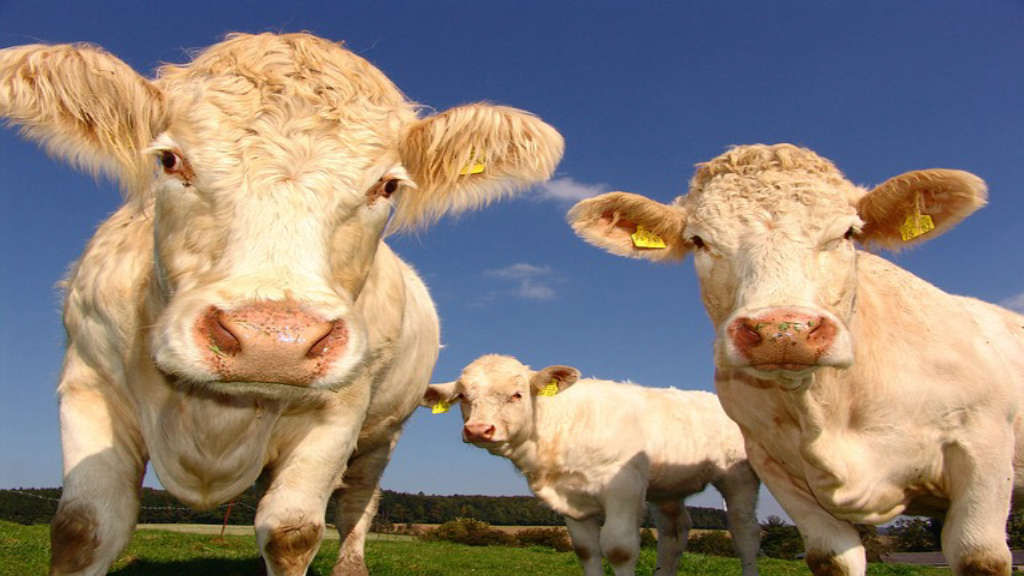Piedmontese beef offers a unique and delicate alternative to regular beef, captivating the palates of those who seek something more than the ordinary. This Italian breed of cattle is celebrated not only for its rich flavor but also for its remarkable tenderness and health benefits. As we delve into the world of Piedmontese beef vs regular beef, we’ll uncover the distinctive qualities that set Piedmontese apart, making it a sought-after choice for gourmet enthusiasts and health-conscious consumers alike.
Main Points
- Understanding the unique characteristics of Piedmontese beef.
- Comparing the flavor profiles of Piedmontese and regular beef.
- Examining the health benefits associated with Piedmontese beef.
- Exploring culinary uses and preparation methods for both types of beef.

Unveiling the Nutritional Advantages: How Piedmontese Beef Outshines Conventional Choices
In the world of culinary delights, the beef we choose can greatly affect not only our palate but also our health. Among the myriad of options available, Piedmontese beef stands out for its unique nutritional profile and exceptional qualities. As consumers become more informed about their dietary choices, it is crucial to understand why Piedmontese beef is a superior alternative to conventional beef.
The Nutritional Profile of Piedmontese Beef
Piedmontese beef is renowned for its lean attributes and rich flavor, making it an alluring option for both chefs and home cooks alike. Yet, the true advantages lie in its composition:
- Lower Fat Content: Piedmontese beef boasts a significantly lower fat content compared to conventional beef. This reduction not only makes it a healthier choice but also enhances its tenderness and juicy flavor.
- Higher Protein Levels: Interestingly, Piedmontese beef contains elevated levels of protein. This quality supports muscle growth and repair while making it an excellent addition to a balanced diet.
- Omega-3 Fatty Acids: Unlike typical beef varieties, Piedmontese beef is richer in omega-3 fatty acids. These nutrients are known for their anti-inflammatory properties and overall benefits for heart health.
But one might ask, how does the beef’s upbringing contribute to these nutritional advantages? Piedmontese cattle are raised in stress-free environments, grazing on natural pastures. Such conditions not only enhance the meat’s flavor but also contribute to its nutritious profile.
The Taste Experience
While nutrition is paramount, the flavor should never be overlooked. Many consumers find themselves perplexed by the notion that leaner meat can also taste fantastic. However, the secret lies in the unique genetics of the Piedmontese breed, which offers a deliciously rich flavor without the excess fat. Thus, the experience of enjoying a Piedmontese steak is often compared to savoring an indulgent treat, without the associated guilt of higher fat content.
The Culinary Versatility
When it comes to cooking, Piedmontese beef proves incredibly versatile. Here are a few cooking methods that elevate its taste:
- Grilling: The high heat quickly seals in juices, creating a tantalizing crust.
- Slow Cooking: Tender cuts yield remarkably flavorful dishes when braised over low heat.
- Stir Frying: Thinly sliced Piedmontese beef allows for quick cooking while maintaining its tenderness.
Yet, some might be surprised by how easily Piedmontese beef fits into various cuisines, from classic Italian dishes to modern Asian stir-fries. This adaptability ensures that it meets diverse culinary needs, making it a staple in any kitchen.
Conclusion
Ultimately, the health benefits and culinary attributes of Piedmontese beef clearly indicate its superiority over conventional options. With lower fat content, higher protein levels, and a richness of omega-3 fatty acids, it’s an option worth considering for anyone invested in their health and culinary experiences. So, the next time you find yourself pondering which beef to choose, remember that Piedmontese beef not only nourishes but also tantalizes the taste buds in ways that traditional beef simply cannot.

Culinary Distinction: The Unique Flavor Profile and Cooking Techniques for Piedmontese Beef
Piedmontese beef, sourced from the Piedmont region of Italy, offers a culinary experience that is both distinctive and luxurious. This unique breed is known for its impeccable flavor and tenderness, attributes that have cemented its status among culinary enthusiasts worldwide. If you delve into the depths of this remarkable meat, you will find its exceptional attributes stem from both the breed itself and the specific techniques employed in its preparation.
Flavor Profile
The flavor profile of Piedmontese beef is unlike any other. It carries a rich, buttery taste, often described as having a mild sweetness balanced by a hint of earthiness. This complexity arises from several factors, including the animal’s diet, which primarily consists of grass and natural forage. Such a diet not only enhances the meat’s flavor but also contributes to its striking marbling, resulting in a juiciness that is truly remarkable.
Moreover, the natural genetics of the Piedmontese breed play a significant role in achieving a lower fat content while maintaining tenderness. The leaner meat boasts a fine texture that melts in the mouth, offering a delightful experience for those fortunate enough to savor it. The combination of these elements renders Piedmontese beef a gourmet choice, suitable for both simple and intricate dishes.
Cooking Techniques
When it comes to cooking Piedmontese beef, the techniques employed can greatly influence the final dish. Traditional methods often emphasize simplicity, allowing the natural flavors of the meat to shine. Techniques such as grilling and pan-searing are common, whereby high temperatures create a beautiful crust on the exterior while preserving the meat’s juicy interior.
Interestingly, sous-vide cooking has gained traction among chefs preparing Piedmontese beef. This technique allows for precise temperature control, ensuring that the meat retains its natural juices and tenderness. After sous-vide cooking, a quick sear on a hot grill or skillet can create the sought-after caramelization on the surface, elevating the dish to new heights.
| Cooking Technique | Description |
|---|---|
| Grilling | High heat creates a smoky flavor and a nice sear. |
| Pan-Searing | Good for creating a crust while keeping the inside tender. |
| Sous-Vide | Low-temperature cooking maintains juiciness and flavor. |
Conclusion
In conclusion, Piedmontese beef is a remarkable product that stands out for its unique flavor profile and the expert techniques that enhance its natural characteristics. The combination of exceptional genetics and proper cooking methods creates a culinary experience unlike any other. Whether you are grilling a steak or employing sous-vide techniques, the result will invariably be a delightful feast that showcases the best of what this extraordinary meat has to offer.
As you explore the world of cooking with Piedmontese beef, remember that the joy lies not only in the meal itself but also in the story and tradition that come along with it. Enjoy this culinary journey!

Conclusion
In conclusion, the journey through the world of Piedmontese beef has been enlightening and rewarding. Consumers increasingly appreciate the unique qualities that set Piedmontese beef apart from regular beef. This exceptional meat not only boasts a remarkable tenderness and rich flavor but also offers health benefits that give it an edge. As we continue to explore the culinary landscape, Piedmontese beef deserves a place at the forefront, particularly for those who prioritize quality and sustainability. Ultimately, making an informed choice can elevate our dining experiences and contribute to a more enriching culinary culture.
Frequently Asked Questions
What is Piedmontese beef?
Piedmontese beef comes from the Piedmont region of Italy and is known for its unique genetic traits that result in a leaner, more tender cut of meat with a high protein content and lower fat levels compared to regular beef.
How does the taste of Piedmontese beef compare to regular beef?
Piedmontese beef is often described as having a richer, more beefy flavor while being more tender than regular beef. The lower fat content may make it taste slightly less fatty but still offers a juicy texture due to its unique muscle composition.
Is Piedmontese beef healthier than regular beef?
Yes, Piedmontese beef is generally considered healthier than regular beef due to its higher protein content and lower levels of saturated fat. It also contains beneficial nutrients like omega-3 fatty acids, which can contribute to a healthier diet.